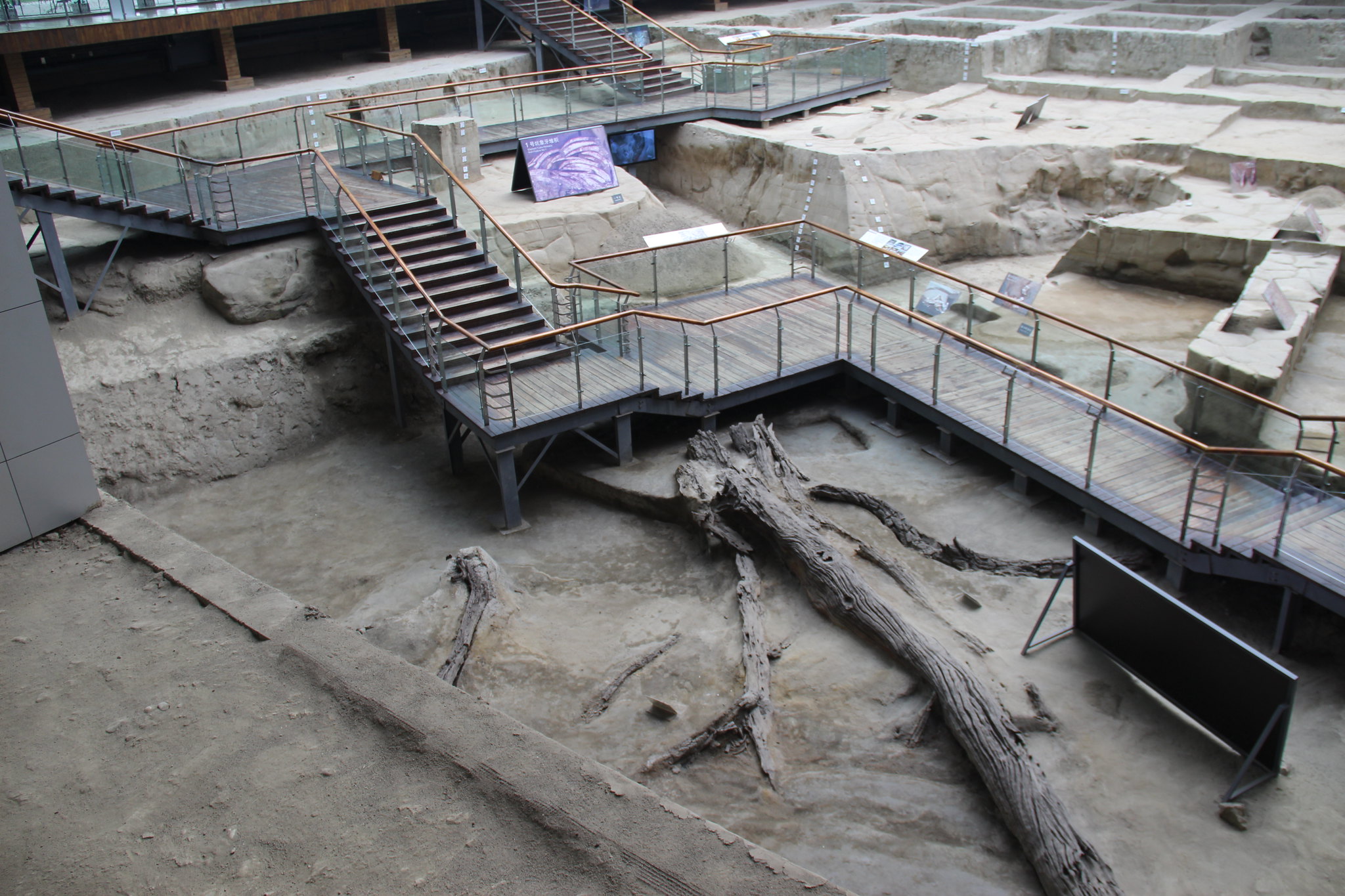The Jinsha Site Museum is an archaeological museum located in Chengdu, Sichuan Province, China. It was established to preserve and showcase the remarkable discoveries made at the Jinsha archaeological site, which dates back to the ancient Shu Kingdom of the late Shang and early Western Zhou dynasties (circa 1200-650 BCE). The museum houses thousands of precious artifacts, including gold, jade, bronze, and ivory objects, as well as pottery and stone tools. The site’s most famous relic is the Golden Sun Bird, a circular gold foil piece that has become a symbol of Chengdu. The museum complex covers an area of 300,000 square meters and features exhibition halls, a conservation center, and an on-site archaeological excavation area where visitors can observe ongoing work. The Jinsha Site Museum offers a fascinating glimpse into the advanced civilization and rich cultural heritage of ancient Sichuan.
Nestled in the heart of Chengdu, China, the Jinsha Site Museum stands as a testament to the rich history and cultural heritage of the ancient Shu civilization. This remarkable archaeological site and museum complex offers visitors a unique glimpse into a world that thrived over 3,000 years ago, shedding light on the mysteries of an advanced society that once called the Sichuan Basin home.
The story of the Jinsha site began in February 2001 when construction workers stumbled upon a treasure trove of ancient artifacts during a routine real estate development project. What started as an unexpected discovery quickly turned into one of the most significant archaeological finds in modern Chinese history. Excavations revealed a vast array of precious objects, including gold, jade, bronze, and stone artifacts, as well as the remains of an ancient city that flourished between 1200 and 650 BCE.
As visitors step into the museum, they are immediately transported back in time to the heyday of the Shu civilization. The exhibition halls are thoughtfully designed to showcase the incredible wealth of artifacts unearthed at the site, each piece carefully preserved and displayed to tell the story of this ancient culture. One of the most iconic finds is the famous “Sun Bird” gold foil, a delicate piece of craftsmanship that has become the symbol of Chengdu and a national treasure of China.
The museum’s collection goes far beyond just precious metals and stones, though. Intricately carved jade objects, ranging from ceremonial tools to ornate decorations, offer insights into the spiritual beliefs and artistic prowess of the Shu people. Bronze vessels and tools provide a window into their daily lives and technological advancements, while stone carvings and pottery fragments paint a picture of their social structures and cultural practices.
Perhaps one of the most fascinating aspects of the Jinsha Site Museum is its dedication to preserving and showcasing the archaeological process itself. Visitors can observe ongoing excavations through glass floors, witnessing firsthand the painstaking work of archaeologists as they uncover new treasures and piece together the puzzle of this ancient civilization. This unique feature not only educates the public about archaeological methods but also emphasizes the living, breathing nature of historical discovery.
As one wanders through the museum, it becomes clear that the Jinsha site was not just a city but a thriving cultural and religious center. Evidence of complex rituals and sacrificial practices can be seen in the form of elaborately decorated altars and ceremonial pits filled with jade and ivory objects. These findings have led researchers to believe that Jinsha may have been an important spiritual hub for the Shu people, possibly serving as a royal or religious capital.
The museum also does an excellent job of placing the Jinsha site within the broader context of Chinese history and archaeology. Comparisons with other important sites, such as Sanxingdui, help visitors understand the interconnectedness of ancient Chinese civilizations and the unique characteristics that set the Shu culture apart.
Interactive exhibits and multimedia presentations throughout the museum bring the ancient world to life, allowing visitors to engage with history in a tangible way. From virtual reality reconstructions of the ancient city to hands-on activities that simulate archaeological techniques, the Jinsha Site Museum offers an immersive experience that appeals to visitors of all ages and backgrounds.
As one leaves the museum, it’s impossible not to feel a sense of wonder at the achievements of the ancient Shu civilization and the ongoing work to uncover its secrets. The Jinsha Site Museum stands not only as a guardian of priceless artifacts but also as a bridge between past and present, inviting us to reflect on our shared human history and the enduring legacy of ancient cultures.The Jinsha Site Museum stands as a significant archaeological and cultural institution in Chengdu, China, showcasing the rich history of the ancient Shu civilization. Through its extensive collection of artifacts, including the iconic Golden Sun Bird, the museum provides valuable insights into the religious beliefs, social structures, and artistic achievements of the Shu people. The museum’s innovative displays and interactive exhibits effectively bridge the gap between ancient history and modern visitors, making it an essential destination for both scholars and tourists interested in Chinese archaeology and cultural heritage. As a testament to the importance of preserving and studying ancient civilizations, the Jinsha Site Museum continues to play a crucial role in advancing our understanding of China’s complex historical tapestry.

